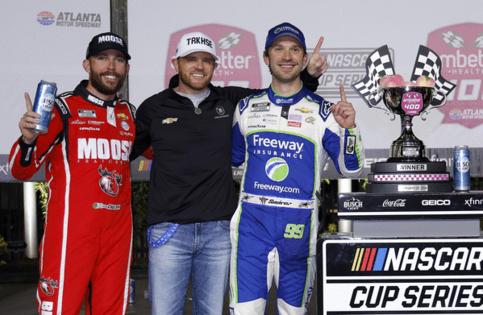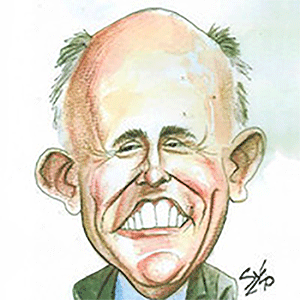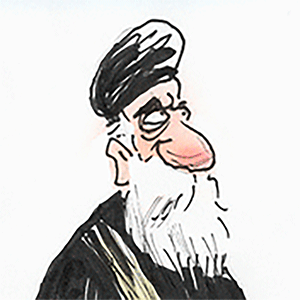4 drivers, 4 countries: How Trackhouse built most diverse NASCAR team in Daytona 500
Published in Auto Racing
DAYTONA BEACH, Fla. — The team’s first full-time driver is from Monterrey, Mexico, who in 2022 became the first Mexican-born driver to win a NASCAR Cup Series race, a Cinderella — or Cenicienta — story for the ages.
The team’s second full-time driver is from south Florida, an eighth generation watermelon farmer who slammed his way into the sport of NASCAR and hasn’t stopped disrupting it since.
The team’s third full-time driver, signed this offseason, is a New Zealander who was a Supercars superstar before he won the inaugural Chicago Street Race in 2023 and turned the motorsports world on its head.
And the team’s part-time driver, signed exclusively for this year’s Daytona 500, is an IndyCar legend from Sao Paulo, Brazil — a hero to many, including his Floridian teammate, who has to pinch himself whenever he’s asked for advice on how to tame NASCAR’s most onerous oval.
There you have it:
You’ve just been introduced to the most diverse race team in this year’s running of the Daytona 500 — and quite possibly one of the most diverse teams, at least when it comes to one race, in the history of NASCAR.
Four drivers.
Four countries.
One team.
Ask any of the four drivers something about the different backgrounds of their race team — whether that be Daniel Suárez of Mexico (99), Ross Chastain of the U.S. (1), Shane van Gisbergen of New Zealand (88) or Hélio Castoneves of Brazil (91) — and they’ll laugh and shrug.
Said van Gisbergan: “It’s epic.”
Castroneves: “It gives opportunity for foreign people, Brazilian people, people from other series to watch it.”
Said Chastain, in talking about team owner Justin Marks, who has been tabbed as a race team owner visionary: “That’s what Justin wanted when he did this. He wanted to be different.”
And here’s Suárez, laughing about how closely the three full-time drivers have been working this offseason as he’s prepared for another full Cup season.
“A lot of people don’t know this, but I have a very hard time understanding Shane, his English,” Suárez said, chuckling during media day on Wednesday. “I don’t know if you guys do or not, but my English is clearly way more limited than most of you guys, and every time that he’s talking to me, I really have to pay attention. And 80 percent of the time, I have to have him repeat something because his accent is just way different than what I’m used to, I guess.”
Can he understand you?
“I hope,” Suárez said. He smiled. “He hasn’t complained. But it’s been great.”
Suárez added: “Trackhouse has been known the last several years to do things like this, so I’m not surprised having teammates from New Zealand, and another from Brazil, and myself. I guess Ross is the outlier right now. So it’s been a lot of fun. Hopefully, we can translate that to good results on Sunday.”
How Justin Marks built Trackhouse Racing into diverse NASCAR team
Such a team is immediately historic and one that will stand out among the 67 total Daytona 500 races in the sport’s history.
But it prompts a question. How did Marks build such a team? A quick recap:
Marks, a former NASCAR driver himself, started Trackhouse Racing in August 2020. His Cup Series team debuted in 2021, with Suárez driving the team’s only chartered entry that year. Then, in 2022, the team purchased Chip Ganassi Racing and hired Ross Chastain to drive in its second charter.
And in 2022, “stars aligned.” Suarez won his first race that year. Chastain won twice. The 1 team also made a deep playoff run — all the way to the Championship 4 by virtue of a move that has been immortalized in NASCAR lore as the “Hail Melon,” where he rode the wall in Martinsville and slung his car into fifth gear to get the places he needed to advance.
So straight out of obscurity, thanks to the parity the Next Gen car delivered and general serendipity, Trackhouse became a team to contend with. They made waves regularly, too, making the sport a global affair.
That was first on display at Watkins Glen, when the company launched an initiative called “Project91.” The project essentially brings in some of the biggest names in motorsports around the world to specific Cup Series races and to have them race for THR and be competitive. The Project 91 designation is what Castroneves is running under on Sunday.
And then, with the dissolution of Stewart-Haas Racing this past offseason, THR acquired one of SHR’s former four Cup charters and signed SVG to the open car.
What it means to the sport
Having these four drivers in the sport’s biggest race is a big deal. Having them on the same team shows how THR remains on the sport’s cutting edge. NASCAR, after all, is hosting its first points race in Mexico on June 15 at the Autódromo Hermanos Rodiguez road course in Mexico City.
But it’s also a big deal to the team, drivers said.
“How to look at it from a bigger picture?” Chastain asked. “That will probably hit me on Sunday when I realize that little old Trackhouse that I remember was a one-car team. I remember when Justin was just a driver — not just, but when he was a driver and an owner.
“Then when he hired me to be the second driver, I remember how big of a deal that felt. And now we’ve doubled that size. It’s going to be a cool moment on Sunday.”
Daytona 500 betting odds
Here are each Trackhouse Racing driver’s odds to win the Daytona 500, as of Thursday evening:
— Ross Chastain +2800
— Daniel Suárez +4000
— Shane van Gisbergen +6500
— Hélio Castroneves +6500
©2025 The Charlotte Observer. Visit charlotteobserver.com. Distributed by Tribune Content Agency, LLC.







Comments